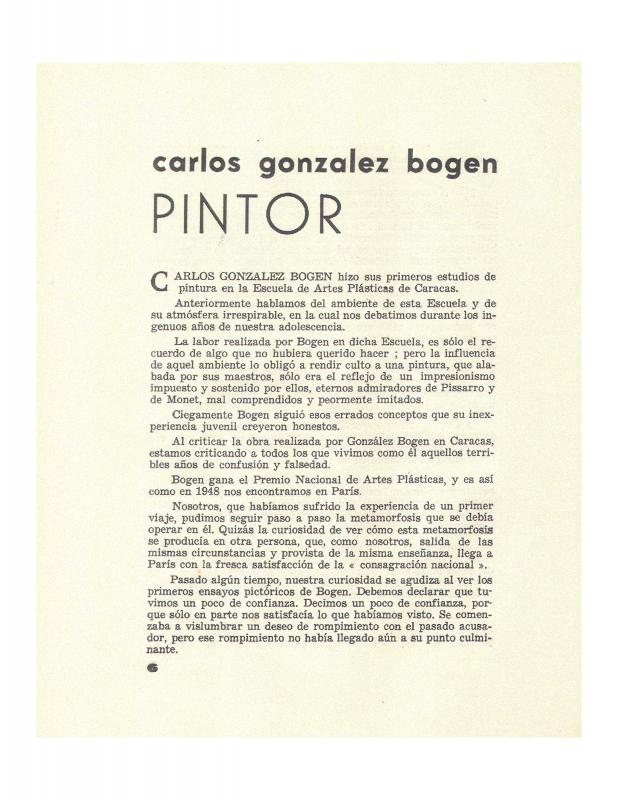Los Disidentes must have been extremely surprised when they found that members of their own generation (comrades in arms during the 1945 rebellion against the Escuela de Artes Plásticas de Caracas) were challenging them and belittling their artistic goals. The young artists who had remained in Venezuela had not sat still; they had continued to wage their own battle to bring about the changes they demanded. La Barraca de Mari-Pérez (1947) group were interested in social realism and the study of the human figure portrayed in a local setting. Some of the group’s members had gone to Mexico (a hotbed of social realism), which reinforced their commitment to that style. To some extent, they felt that their struggles had been diminished by the emergence of Los Disidentes in Venezuelan cultural circles. On top of that, they were faced with the challenge of attempting the titanic task of transforming Venezuela’s traditional artistic language. Such was the gist of the attacks launched by La Barraca de Mari-Pérez group against Los Disidentes, and this response sought to explain the pictorial “mission” that the latter claimed as their own.
The article “Alrededor de la historia de ‘Los Disidentes’: respuesta a ‘Historia de una mítica disidencia’ publicada por La Barraca de Mari-Pérez…” was published in the newspaper El Nacional on August 3, 1950 in response to “Historia de una mítica disidencia” [doc. no. 850533], which was published in the newspaper Últimas Noticias, Caracas, on July 9, 1950. The former article was subsequently reprinted in the magazine Los Disidentes, no. 5 with a post script signed by Erminy, Guevara, and Debourg.
Los Disidentes was a group started in Paris in 1950 by a number of Venezuelan artists and writers who lived there from 1945 to 1952. From their home base in Paris they decided to challenge the official education provided by the Escuela de Artes Plásticas de Caracas, which was based specifically on landscape painting and nativist art. In the spirit of their name, Los Disidentes sought to breathe new life into traditional and academic art through an assimilation of the values espoused by European abstraction. The painters in the group included Alejandro Otero (1921–90), Mateo Manaure, Pascual Navarro, Luis Guevara Moreno, Carlos González Bogen, Narciso Debourg, Perán Erminy, Rubén Núñez, Dora Hersen, and Aimée Battistini, in addition to J. R. Guillent Pérez, who was a philosophy student at the time. They were subsequently joined by other Venezuelan artists, such as Armando Barrios, Miguel Arroyo, Oswaldo Vigas, Omar Carreño, Alirio Oramas, and Régulo Pérez. They published a magazine, named after their group, Los Disidentes, which carried all their news, and appeared a total of five times.
To read other articles about this group, see by Alejandro Otero “Del arte abstracto” [doc. no. 813611], “Las ‘placas al mérito’ y la juventud” [doc. no 813429], and “Mateo Manaure en la pintura: un joven pintor venezolano, en viaje hacia París” [doc. no. 813639]; by Carlos González Bogen “La escuela ‘de los paisajistas’ de Caracas” [doc. no. 813695], and “‘De nuevo’ Los Disidentes” [doc. no. 813667]; by Mateo Manaure “Carlos González Bogen: pintor” [doc. no. 813583]; by Narciso Debourg “En torno a la pintura de hoy” [doc. no. 813597]; and by J. R. Guillent Pérez both “Lo latinoamericano y lo occidental [Parte I]” [doc. no. 813723], and “Lo latinoamericano y lo occidental (Continuación)” [doc. no. 813478].










